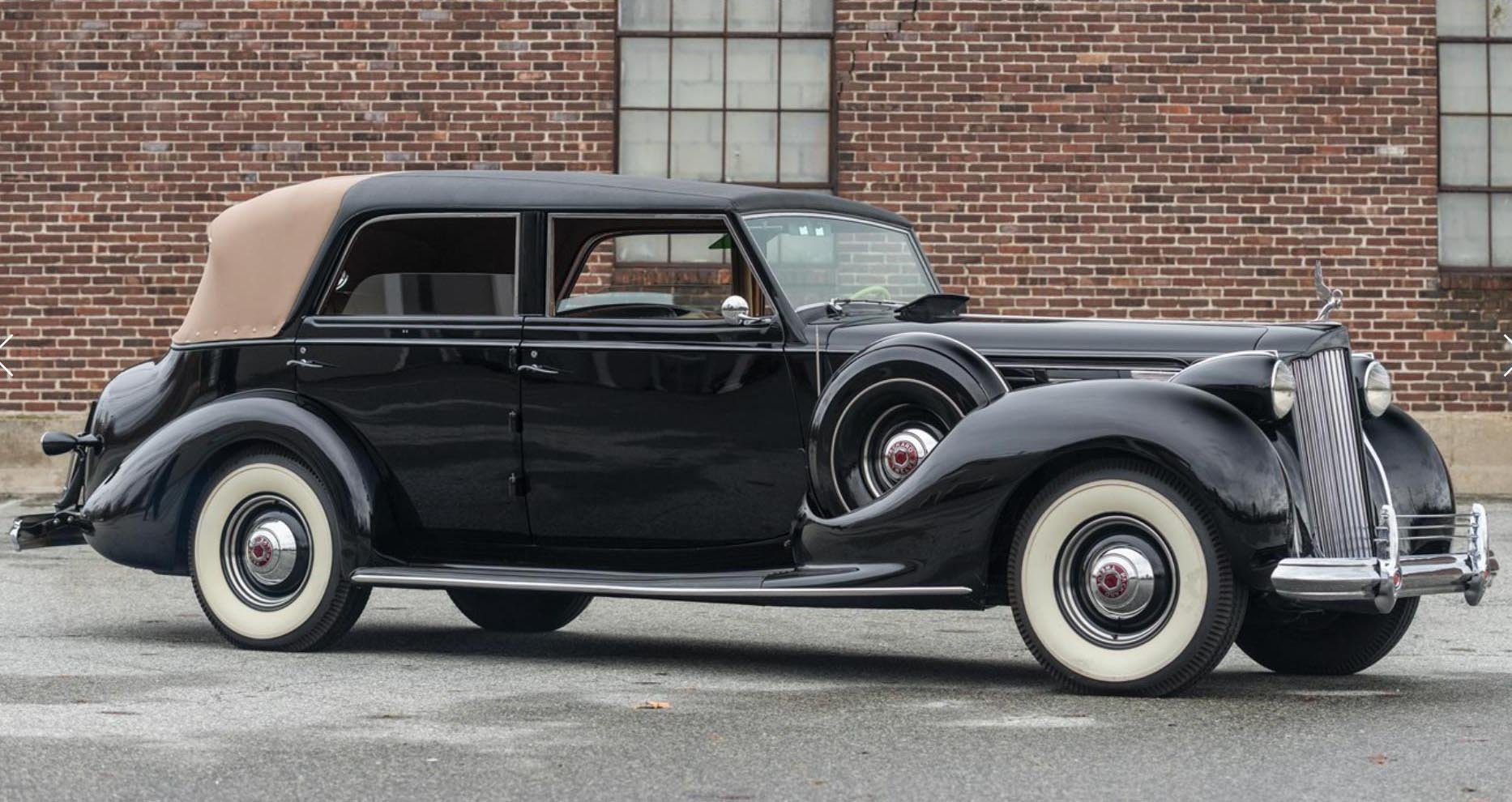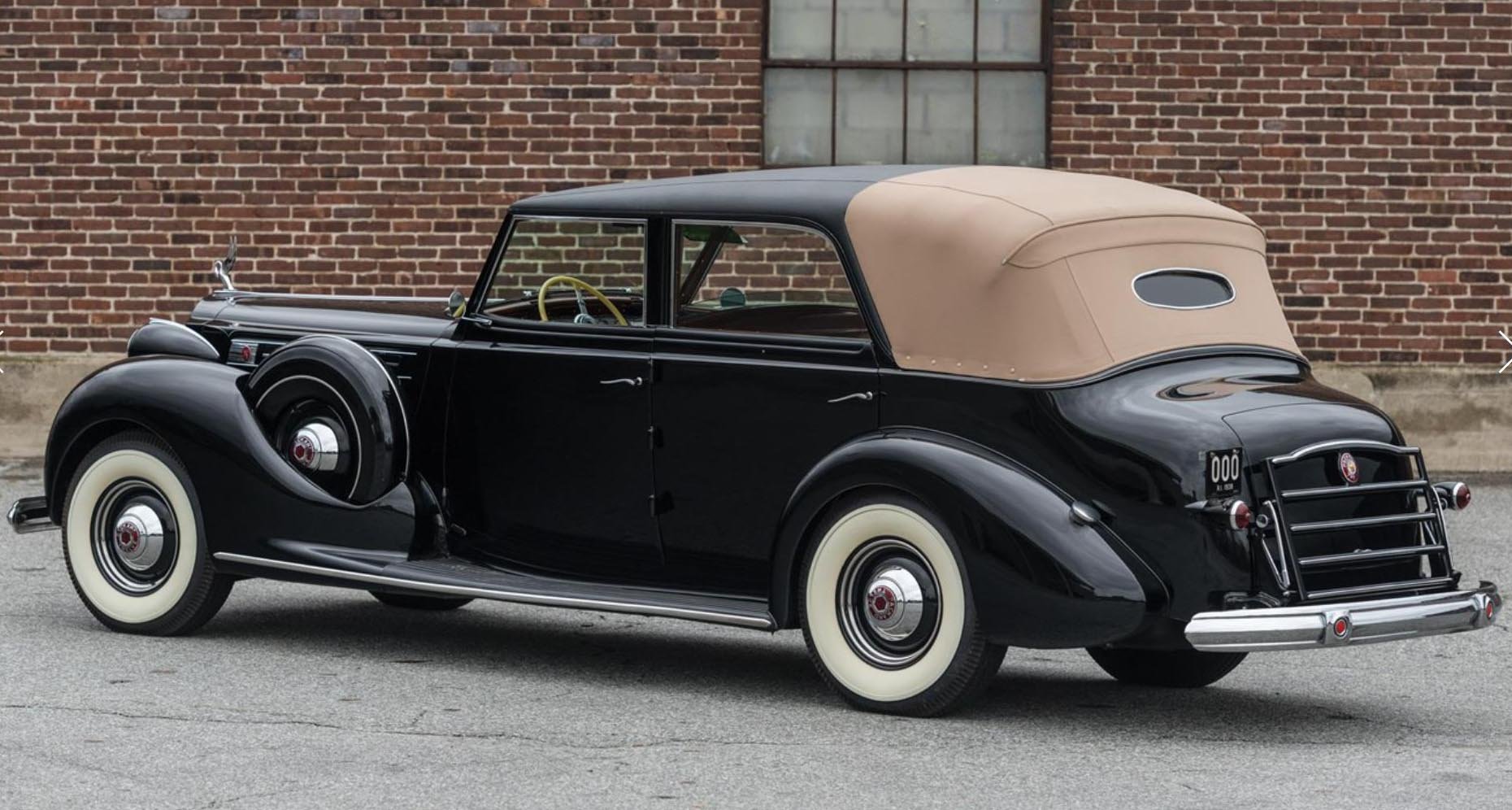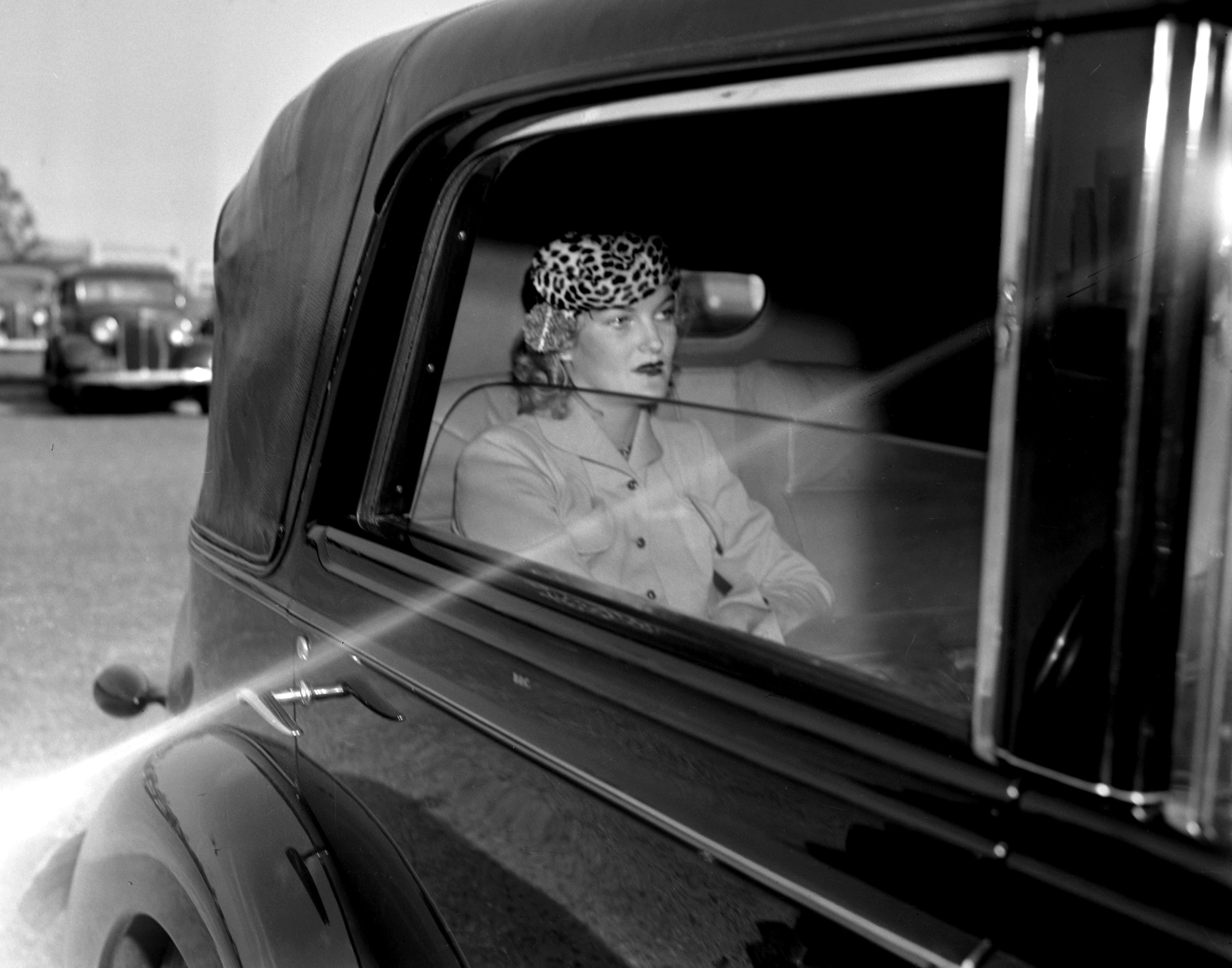1938 Packard Twelve Landaulet







The modern landaulet design allows just the rear portion of the roof to be removed, giving the passenger privacy or fresh air and a view from the outside.
The cars were designed and built as one unit including the fenders, running boards, hood, and body.
More plush and comfortable suspension, along with easier to operate steering (for a big car).
The Packard Twelve was produced from 1933 to 1939 with over 35,000 examples produced. It is considered by many to be one of the finest automobiles produced by Packard and one of the most significant creations of the classic car era. The Packard Twelve got its name from Packard’s fear that the Twin Six name might confuse customers as to the car’s actual cylinder count.
This particular vehicle is one of very few surviving late Packard Twelves fitted with truly custom coachwork. It was ordered as a chassis by Doris Duke, heiress to the American Tobacco Company fortune. At the age of 25, Miss Duke was already the world’s wealthiest woman, and was a prominent figure in the society and gossip columns for much of her eight decades of life. She was a horticulturalist, a noted collector of jewelry and Oriental art, and famously a Newport resident.
In the earliest days of the automobile, most cars were designed with open tops to allow the public to view the occupants in the car. During this time, many people wanted to be seen in their cars and show them off to the public, so cars were designed as such. Doris Duke was 26 when she ordered this Packard Twelve Landaulet, and after being at the center of newspapers and tabloids for nearly a decade, she was exhausted of being seen everywhere she went. The landaulet design allows just the rear portion of the roof to be removed, which in turn gave Ms. Duke complete privacy if she wished, or fresh air and a view from the outside if she was in the mood to be spotted by paparazzi.
In a bid to improve Packard sales of the 12-cylinder cars, the Individual Custom bodies were available only on the Twelve, meaning that buyers who wanted a semi-custom car had to spring for the bigger engine. The engine, underneath the long and flowing front hood, was refined, powerful, smooth, and quiet. In 1935, Packard introduced more horsepower and mechanical improvements. The suspension became more plush and comfortable while the steering became easier to operate. The cars were designed and built as one unit including the fenders, running boards, hood and body.
The Duke Twelve was custom bodied by Rollston, New York’s most famous and costly coachbuilder, as a modern landaulet, a limousine with a convertible section over the rear seat. Similar in style to a Rollston body produced for the Duesenberg Model J, number J-577, the body featured a one-piece windshield, as well as a lavishly appointed interior with a clock and speedometer. The design also featured storage for cocktail accouterments in the rear passenger compartment. Controls for the radio were placed literally at Miss Duke’s hand, in the right rear armrest.
Reportedly the car was delivered to Duke Farms in Hillsborough, New Jersey, and was used to transport its owner on her regular trips between the Garden State and her summer “cottage,” Rough Point here in Newport – just down the road on Bellevue.
Ray’s Auto Restoration of Webster, Massachusetts, a noted local Packard specialist, oversaw its complete restoration to original condition, including the correct original Duke color scheme, over a two-year period. Fittingly, given its early history, the car was first shown at the Newport Concours d’Elegance in 2009, winning Best Pre-War Open Car.
Specifications:
Engine: 430 CI V12
Horsepower: 175 @ 3200 RPM
Transmission: 3 Hydra-Matic Synchromesh
Front: Independent with coil springs and tubular shock absorbers
Rear: Live axle with leaf springs and tubular shock absorbers

